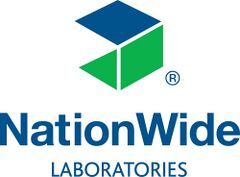Glucose
Glucose is the source of energy in the body and is regulated by insulin and glucagon. Glucose passes freely through the renal glomeruli and is totally reabsorbed in the renal tubules. As plasma glucose levels rise this mechanism is saturated and the ‘renal threshold’ exceeded, glucose then appears in the urine. Renal thresholds for the dog and cat are approximately 10-12mmol/l.
Small animals
Causes of hyperglycaemia
- Diabetes mellitus
- Stress (cats)
- Steroid therapy
- Post prandial
- Hyperadrenocorticism
- Pancreatitis
- Therapy with some progestagens
- Acromegaly (especially cats)
Causes of hypoglycaemia
- Hepatic insufficiency
- Insulinoma
- Insulin therapy
- Hypoadrenocorticism
- Starvation (especially neonates)
- Septicaemia
Complementary tests
Urine glucose (glucosuria in the absence of hyperglycaemia indicates a primary renal tubular problem), fructosamine (diabetes mellitus vs. stress hyperglycaemia), ACTH stimulation test (hyperadrenocorticism, hypoadrenocorticism), IGF1 (acromegaly), lipase (pancreatitis), insulin (insulinoma), bile acids (hepatic insufficiency).
Equine
Causes of hyperglycaemia
- Post prandial
- Excitement/ stress
- Severe pain
- Acute colic/laminitis
- Pituitary tumours (adenoma)
- Post exercise
- Alpha 2 agonist administration (xylazine, detomidine)
- Glucocorticoid administration
Rare causes of hyperglycaemia
- Obesity
- Pregnancy
Causes of hypoglycaemia
- Anorexia newborn
- Late endotoxic shock
- Severe scouring
- Malabsorption
- Insulinoma (rare)
Complementary tests
In feed oral glucose challenge test, see equine metabolic disease section (insulin).
